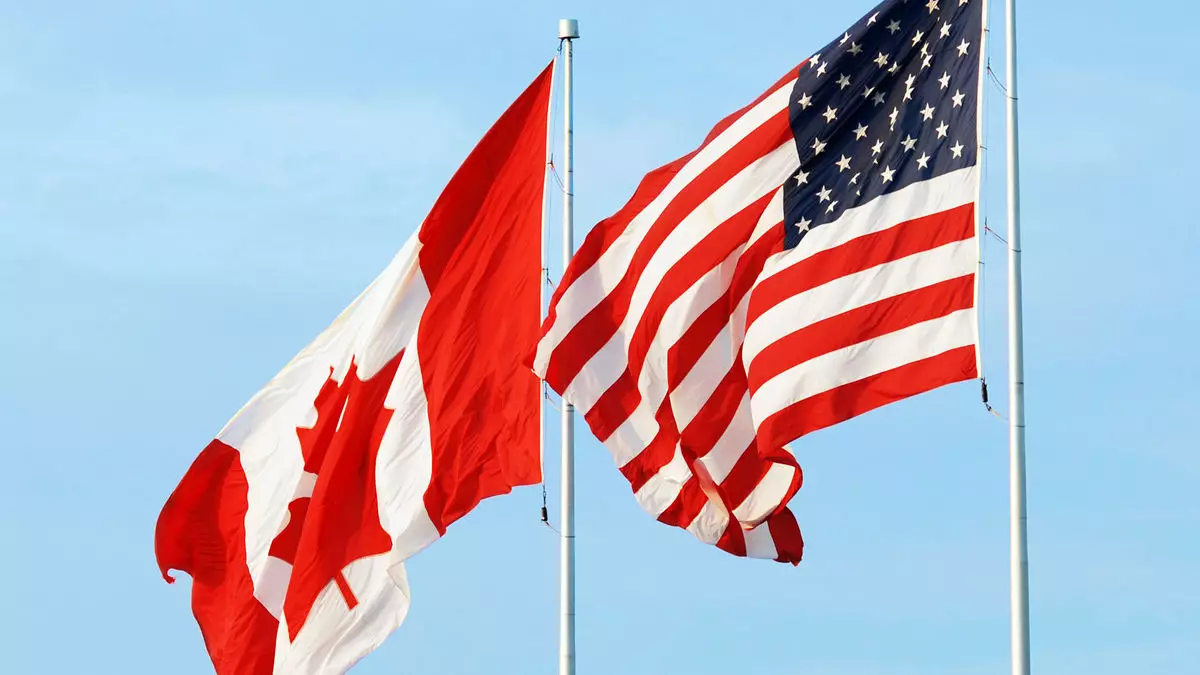The aviation landscape between Canada and the United States has reached a staggering low in advanced bookings, reflecting a decline of over 70% for the summer travel season, as highlighted by OAG, a leading aviation data company. The crux of the issue lies not merely in fluctuating travel habits but rather in a confluence of geopolitical tensions, economic uncertainty, and currency challenges that together create a frustrating environment for travelers. With fewer than 300,000 advanced bookings recorded for April alone, this situation indicates a profound shift in consumer confidence, one that has wide-reaching implications for the entire aviation industry.
At the heart of these alarming statistics is a sentiment rooted in the political climate. President Trump’s contentious remarks about potentially integrating Canada as the 51st U.S. state have understandably spurred ire among Canadians. This rhetoric not only offends national pride but appears to sour the relationship between the two neighboring countries at a time when cooperation is crucial. It’s evident that a strong emotional undertow is affecting travel preferences; a psychological barrier has been erected that goes beyond mere numbers. Consequently, many Canadians are choosing to rethink their travel plans to the U.S., leading to an almost seismic shift in air travel demand.
The Structural Economic Impact
The implications of this travel decline extend into the economic fabric of both countries, particularly given the weakened Canadian dollar. As travelers are increasingly affected by exchange rates, the appeal of cross-border travel diminishes. Recognizing this economic hurdle, cruise lines like Oceania have sought to attract Canadian travelers by offering limited-time promotions that allow bookings in Canadian dollars at par value. This strategic pivot helpfully nudges travelers back towards vacationing, albeit through alternative means.
Nonetheless, this response also serves as a stark reminder of the challenges faced by airlines. Despite the drastic drop in demand, most airlines have opted for minimal adjustments to their schedules, reflecting both a reluctance to shift established routes and a puzzling optimism about a travel rebound. As mentioned, the airlines have removed over 320,000 one-way seats, which may seem substantial, but represents merely a 2.6% decrease in available capacity. Thus far, the impact on routes appears concentrated in peak months like July and August, suggesting airlines may be holding out hope for a late-season recovery.
Shifts in Market Strategy
Interestingly, airlines are also beginning to pivot their operational strategies in response to this unique market circumstance. WestJet, for instance, has strategically redirected some of its canceled U.S. routes toward Europe, indicating a fluidity that is necessary in an unpredictable marketplace. This shift not only highlights the adaptability required within the airline industry but also reflects a growing trend among carriers to seek profitability in less traditional routes amidst unpredictable demand from the North American market.
The reality for travelers, however, remains one of uncertainty. As routes like Air Canada’s Vancouver to Washington D.C. and various United Airlines connections take hits, many travelers find fewer options available. With airlines reluctant to implement drastic route reductions or changes, consumers are left in a state of limbo, complicating the decision-making process about future travel plans.
A Glimmer of Hope Amidst Uncertainty
Despite the foreboding statistics and narratives, one cannot completely dismiss the resilience of the travel sector or the potential for recovery. While current booking data showcases a dire strait, such volatility often precedes transformations in consumer behavior. As borders open and relationships normalize, there remains potential for resurgence in travel between Canada and the U.S.
However, this expected comeback is intricately tied to the diplomatic and economic resolutions stemming from the present climate. An improvement in public sentiment, a stabilized exchange rate, and better economic conditions can serve as pivotal reinforcements for the aviation market. Moreover, targeted promotions akin to those initiated by cruise lines could encourage consumers that travel remains an accessible and enjoyable pursuit.
Ultimately, as we navigate through this period of decline, the industry must remain circumspect and resilient, fostering strategies to not only survive but ultimately thrive in a post-peak environment. The path forward will undoubtedly require innovation, sensitivity to consumer sentiment, and an understanding of the broader economic landscape.


Leave a Reply